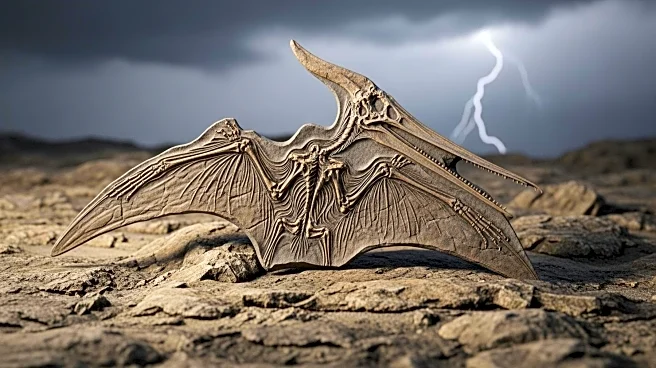What's Happening?
An international research team from Switzerland and Germany has identified a new species of ichthyosaur, named Eurhinosaurus mistelgauensis, based on fossils found in the clay pit of Mistelgau in Upper Franconia, Germany. The study, led by Gaël Spicher from the JURASSICA Museum in Switzerland, was published in the journal Fossil Record. The fossils were curated at the Urwelt-Museum Oberfranken in Bayreuth, Germany. This new species is noted for its elongated upper jaw, similar to modern swordfish, and distinct features such as robust ribs and a unique skull-neck joint. The Mistelgau site, known for its dense accumulations of Jurassic cephalopod remains, continues to be a significant location for paleontological discoveries.
Why It's Important?
The discovery of Eurhinosaurus mistelgauensis provides valuable insights into the diversity and evolution of marine reptiles during the Jurassic period. This finding underscores the scientific importance of the Mistelgau locality, which offers rare glimpses into a poorly documented time in Earth's history. The research enhances understanding of Jurassic marine ecosystems and the evolutionary adaptations of ichthyosaurs, which are often compared to modern dolphins and tuna due to their body shape. The study also highlights the role of museum collections in advancing paleontological research and the ongoing significance of fossil sites like Mistelgau in contributing to the global scientific community.
What's Next?
Further studies on the Mistelgau fossils are planned, including analyses of injuries found in the ichthyosaur skeletons. These investigations aim to provide deeper insights into the ecology and life history of these ancient marine reptiles. The continued exploration of the Mistelgau site is expected to yield additional discoveries that could further illuminate the evolutionary history of marine life during the Jurassic period.












